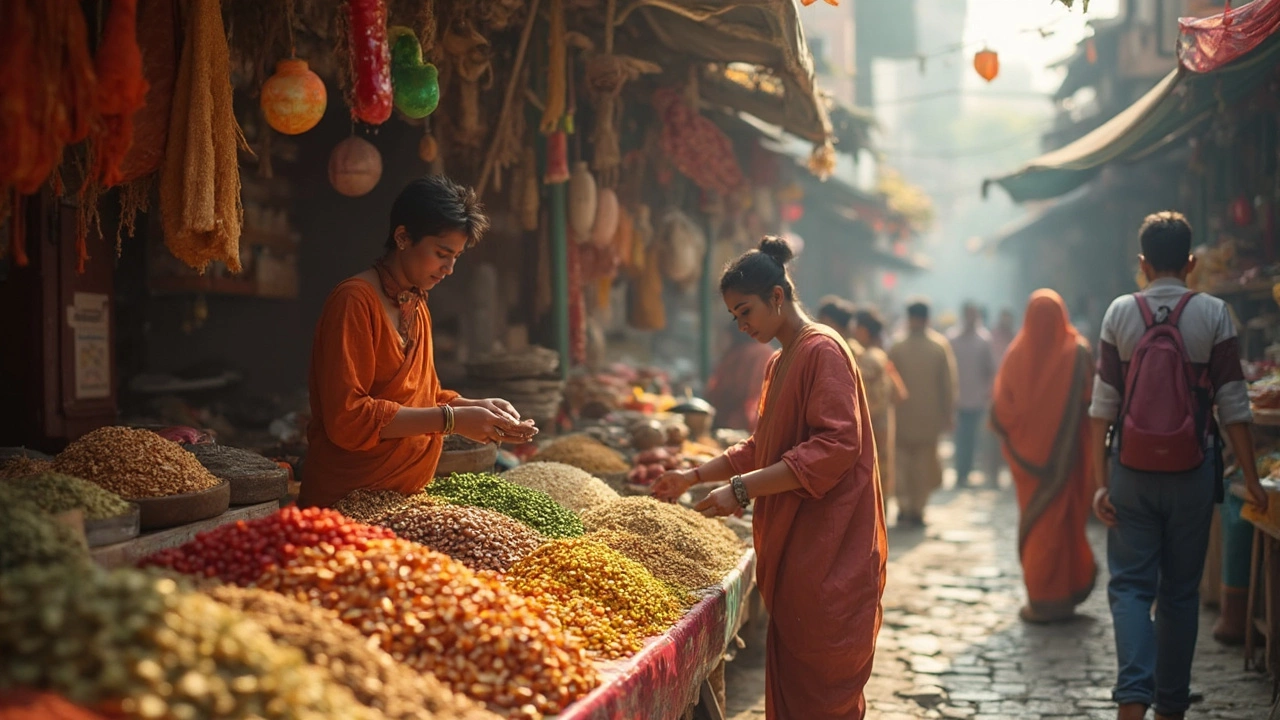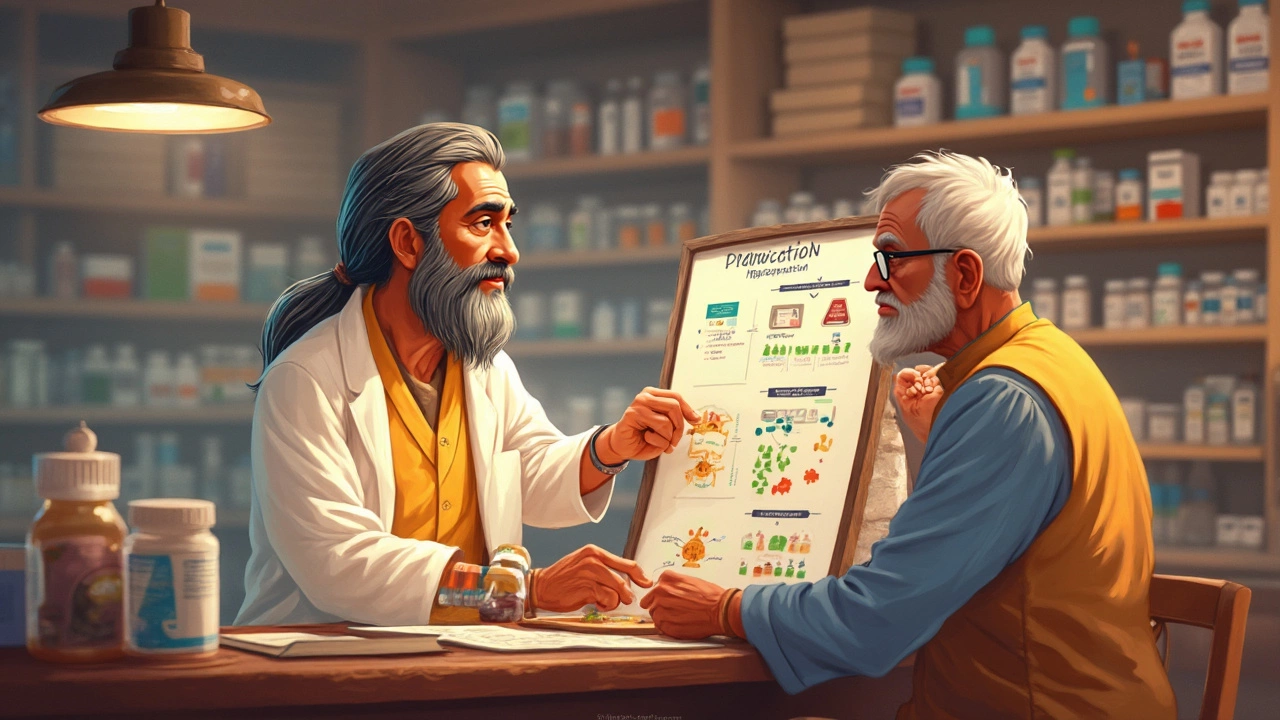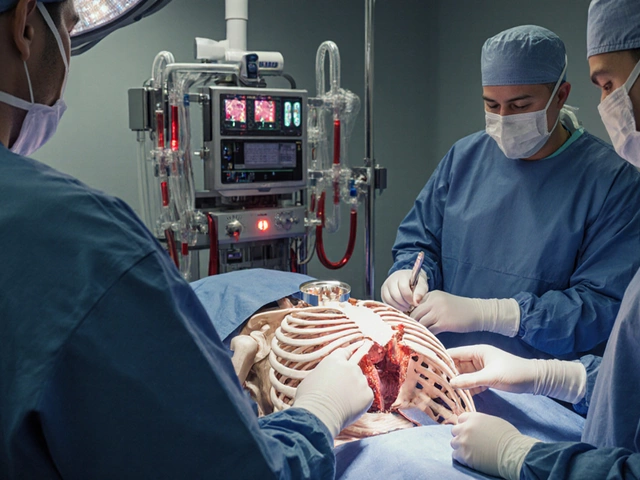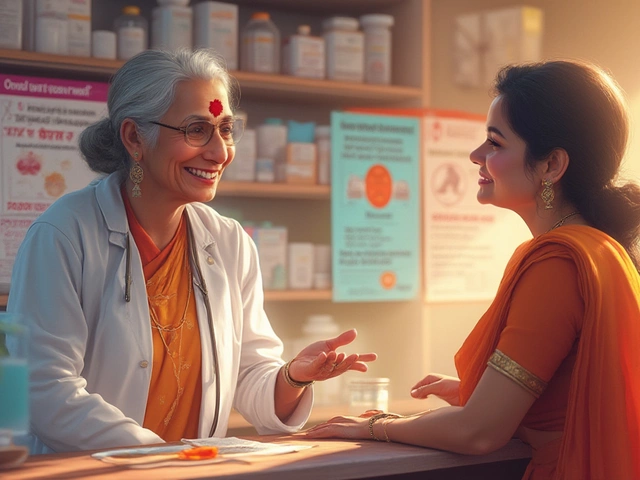We all know avoiding sugar is rule number one for managing diabetes, but have you ever thought about where sneaky sugar might be hiding? It's crazy, but even 'healthy' stuff can pack a sugary punch. Take smoothies, for instance. They sound good for you, but some are loaded with tons of fruit (and sugar!), throwing your blood sugar levels all out of whack.
Carbs are another tricky area. You might think a small bowl of pasta won't hurt, but it can send your glucose soaring faster than you can say 'penne.' It's all about balance, and knowing what's safe to eat can make all the difference.
And it's not just about food. Medications can also be a minefield. Some common drugs can mess with your diabetes meds. It's worth having a chat with your healthcare provider to make sure everything you swallow plays nice together.
Then there's alcohol. Is it a total no-go? Not entirely, but you've got to know what you're doing. A couple of drinks now and then might be okay, but overdoing it can wreck your condition.
Lastly, snacking smart is a game-changer. A well-chosen snack can keep your levels steady, stop those crazy hunger pangs, and help out when you're on the go. So, don't underestimate those little munchies; they can make or break your day!
- Hidden Sugar Bombs
- The Sneaky Carbs Trap
- Medication Interactions
- Alcohol: Friend or Foe?
- Choosing the Right Snacks
Hidden Sugar Bombs
Alright, let's talk about those sneaky sources of sugar lurking in your kitchen. You might think you're on top of your diet game, but these foods could be tripping you up without you even knowing it. So, why are sugary foods such a big deal? For anyone with diabetes, they can send blood sugar soaring, putting a real dent in managing the condition effectively.
First up, we have breakfast cereals. Even the ones labeled as 'healthy' or 'whole grain' can be packed with added sugars, which is bad news for anyone keeping an eye on their glucose. Always read labels carefully and aim for options with minimal sugar.
Then there's the beloved smoothie. They’re often marketed as health drinks, but many store-bought versions are loaded with fruit juice concentrates or syrups that can turn your smoothie into a bona fide sugar bomb. If you're making them at home, stick to fresh veggies and a measured amount of ripe fruit to keep the sugar levels in check.
Next on our sugar hit list are sauces and dressings. Ketchup and barbecue sauce are classic culprits, with added sugars hiding in plain sight. Always opt for sugar-free versions or make your own at home to ensure you're staying on track.
- Diabetes restrictions aren't made to spoil your fun; they're there to help keep those blood sugar spikes at bay.
- Check the label for 'corn syrup' or 'high-fructose corn syrup,' which often sneaks into processed foods.
- Remember, just because something doesn't taste sweet, doesn't mean it's sugar-free!
Meanwhile, you’d be surprised how much sugar is in seemingly innocent beverages. Fruit juices and energy drinks can be more sugary than a soda! Swap them out for water infused with a slice of lemon or cucumber for flavor without the unwanted sugar.
Here's a jaw-dropper: flavored yogurts. A seemingly healthy breakfast choice, but can contain as much as 20 grams of sugar per serving. Your best bet? Plain yogurt with fresh fruit. The added sugars are doing zero favors to your diabetic diet.
To keep things real, here's a little table showing the sugar content in some everyday items:
| Food Item | Approximate Sugar Content (grams per serving) |
|---|---|
| Flavored Yogurt | 20g |
| Barbecue Sauce (2 tablespoons) | 9g |
| Energy Drinks | 27g |
Keep these tips in mind and you'll be able to navigate your meals without accidentally hitting those unexpected sugar traps. Staying aware of these forbidden foods for diabetes can make all the difference!
The Sneaky Carbs Trap
Carbs, man, they're like the double agents of the food world. You think you've got a handle on them, but they have this sneaky way of showing up where you least expect them, taking your blood sugar for a surprise rollercoaster ride.
Let's talk about starchy foods. The usual suspects like bread, pasta, and rice are notorious for spiking glucose levels, but what about those "whole grain" products? They're often marketed as healthy, yet they can still pack quite a punch. It's all about portion control and selecting truly whole grain options.
Don't even get me started on cereal. A lot of brands that claim to be 'healthy' are actually packed with sugars and refined grains. Always check the labels, and look for cereals low in added sugars and high in fiber.
And then there are veggies—hold up, are veggies sneaky too? Well, sort of. Corn, peas, and potatoes are higher in carbs than many realize. That doesn't mean they're off the table, but moderation is key. Pick non-starchy veggies like spinach, broccoli, and zucchini more often to keep blood sugar levels steady.
Here's the real trick: understanding the glycemic index (GI). Foods with a high GI release glucose rapidly, while low-GI foods do so more slowly. For example, white bread has a high GI, while oats stand lower on the scale. Swapping a high-GI food for a low-GI one can help maintain balanced blood sugar levels.
- Choose whole, unprocessed foods over refined options.
- Pair carbs with proteins and fats to slow digestion.
- Be mindful of portion sizes—sometimes less is more!
- Monitor your blood sugar before and after eating new foods to see how they affect you.
Knowing your carbs and how they work is like having a secret weapon against unexpected blood sugar spikes. It's not always about cutting them out entirely but making smart, balanced choices.

Medication Interactions
Managing diabetes often means juggling different medications. It's not just about popping that metformin or insulin and calling it a day. You see, certain meds don't play nice with diabetes meds and can throw your blood sugar levels off balance.
Take over-the-counter cold medicines, for instance. Some of these contain pseudoephedrine, which can raise blood sugar. Plus, if it's loaded with sugar or alcohol (yes, some have both!), that's another risk right there.
And then there's corticosteroids like prednisone. Doctors often prescribe these for allergies or asthma. But watch out—these can spike blood sugar levels like crazy. It's always smart to keep an open line of communication with your doctor about all the meds you're taking.
Did you know some blood pressure medications can interfere with blood sugar control? Beta-blockers, while great for heart health, might mask symptoms of low blood sugar (hypoglycemia). That makes it tricky because you might not realize your levels are dropping.
Your healthcare provider should always be in the loop. Make sure to ask questions and mention all the meds you use, even those herbal supplements you might think are harmless. Speaking of herbal supplements, items like St. John's Wort can mess with how well diabetes meds work, so it's best to be cautious.
Here's a quick tip: Create a meds list on your phone with all the medications, doses, and any allergies you have. That way, you always have the info handy when visiting any healthcare professional. Knowledge is power, right?
Alcohol: Friend or Foe?
When it comes to managing diabetes, alcohol is like a tricky cousin—it can be fun, but it needs to be handled with care. So, is it going to turn your blood sugar upside down? Let's break it down.
First off, moderate drinking is generally considered okay for most people with diabetes. That means up to one drink per day for women and up to two drinks for men. But here's the catch: alcohol can lower blood sugar for up to 24 hours. So, it’s key to check your levels before and after you have a drink. If you're someone who takes insulin or other diabetes medication, this becomes even more important because there's a risk of hypoglycemia.
Always drink on a full stomach to avoid sudden drops in blood sugar. High-carb drinks like beer or sugary cocktails are risky since they can spike your glucose levels. Instead, think about opting for a glass of wine or a light beer instead.
- Red wine has been said to offer heart benefits, but it's still important not to overdo it.
- Clear liquors like vodka and gin mixed with sugar-free mixers can be a safer bet.
Here's a fun fact: the American Diabetes Association says it's a myth that diabetics must completely avoid alcohol. Instead, knowing how your body reacts and keeping an eye on your blood sugar makes all the difference.
Seriously, if you feel like having a drink, remember to do it smart. Stay hydrated with water and always have a plan—just like that time we plan ahead for those weekend family get-togethers. Alcohol can be a friend, but only if we’re wise about it.

Choosing the Right Snacks
Alright, let's talk about snacking, a real game-changer for those managing diabetes. Picking the right snacks can keep your blood sugar levels from swinging all over the place and help you feel full and satisfied between meals. It's like finding your snacking sweet spot, minus the actual sweets!
So, what's on the 'safe for diabetics' list? A few superstar snacks include:
- Nuts and seeds: Almonds, walnuts, and sunflower seeds are not just tasty; they're also loaded with healthy fats and fiber, keeping your energy steady.
- Greek yogurt: Go for plain or low-sugar options. Add some berries or a sprinkle of chia seeds for extra flavor without the sugar overload.
- Veggie sticks and hummus: Carrots, cucumbers, or celery dipped in hummus make for a crunchy, satisfying snack. Plus, they're packed with vitamins and fiber.
- Cheese cubes or string cheese: Cheese is a protein-packed option that keeps you full without raising blood sugar levels.
- Boiled eggs: Simple, filling, and loaded with protein, boiled eggs are easy to eat on the go.
A quick heads-up: portion size matters. Even with 'safe' snacks, too much of a good thing can still affect your blood sugar. Aim for smaller servings and think of it as a little pick-me-up rather than a meal.
Check out this quick comparison of a few go-to snacks to see how they stack up:
| Snack | Calories | Carbs (g) | Fiber (g) |
|---|---|---|---|
| Almonds (1 oz) | 160 | 6 | 3.5 |
| Baby carrots (1 cup) | 50 | 12 | 3.5 |
| Greek yogurt (6 oz plain) | 100 | 6 | 0 |
Staying equipped with the right snacks ensures you aren't reaching for that sugary granola bar in a pinch. Remember, being prepared is half the battle!





